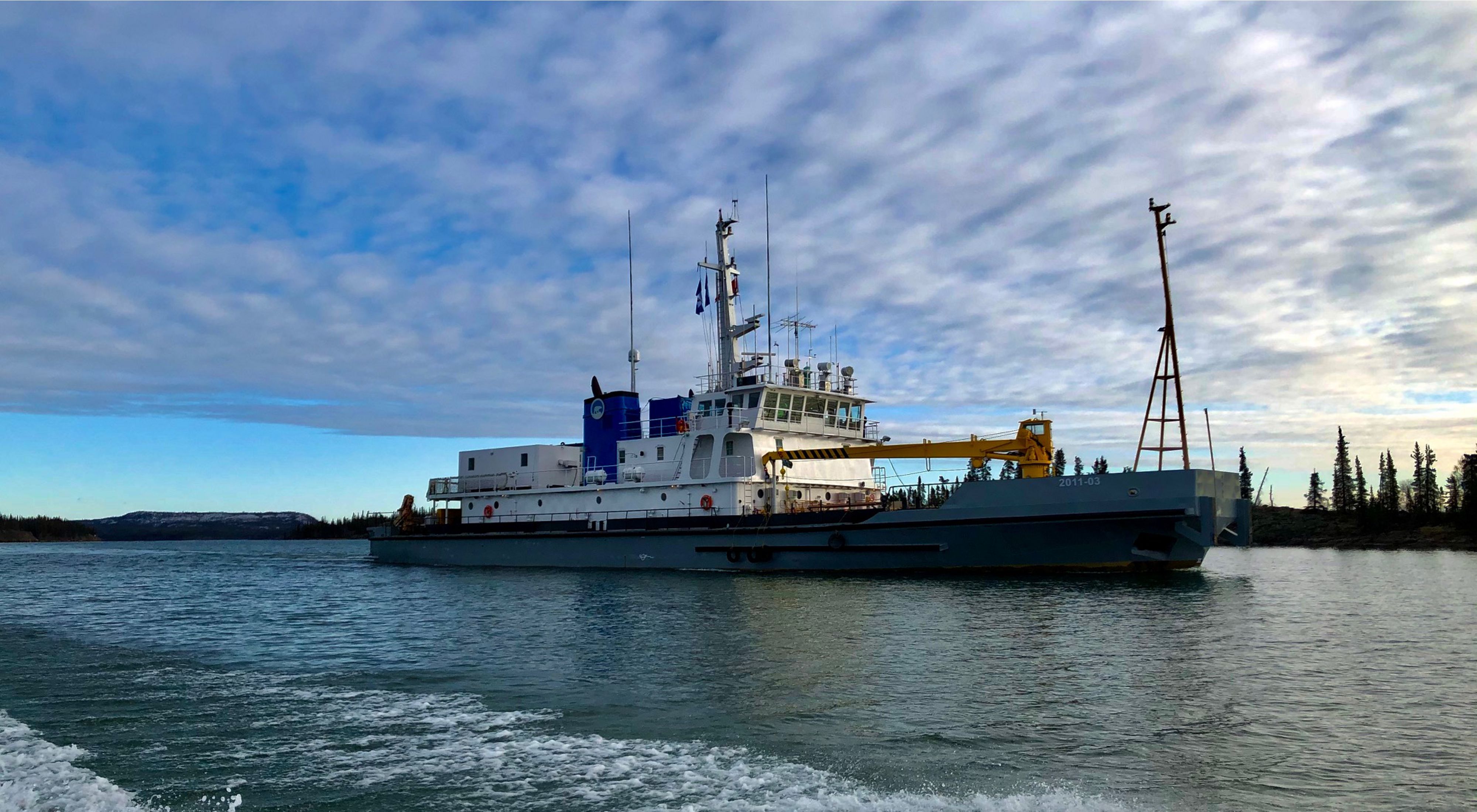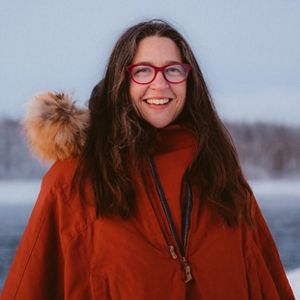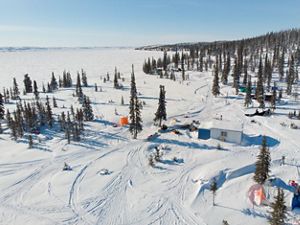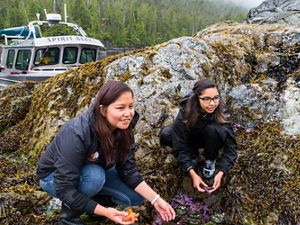Setting Sail with Emerging Leaders in the Northwest Territories
Aboard a research vessel on Great Slave Lake, Indigenous youth from Łutsël K’é Dene build skills to become stewards of their lands and waters.
Last Fall, a research vessel set sail on Tu Nedhé (also known as Great Slave Lake)—the deepest lake in North America and one of the world’s largest freshwater bodies. The ship, the Nahidik, once sailed the Beaufort Sea, collecting data on the impacts of offshore oil wells 20 years ago. It is once again undertaking scientific explorations. But this time, the crew of scientists also includes students from nearby Indigenous communities.
For the past 10 years, Nature United has supported youth programs in the Northwest Territories with our partner the Łutsël K’é Dene First Nation. The learning model, which Łutsël K’é developed, pairs young people with experienced environmental monitors, super-skilled adults and knowledgeable Elders of their community, to become Ni Hat Ni Dene Rangers for the summer.
After traveling on the weeklong expedition aboard the Nahidik, 14-year-old Kira Young sought to deepen her knowledge of Great Slave Lake. Together with oceanographer Eddy Carmack, Nature United's Northwest Territories lead Tracey Williams and Emerging Leaders project lead Zahra Remtulla spent several months mentoring Kira as she learned more about the ecology of Great Slave Lake.

By Kira Young, Nahidik Intern
The Science of Great Slave Lake
Great Slave Lake has sustained life for thousands of years in its pristine waters and along its shores, but its history goes back way beyond when living beings inhabited its surroundings. Millions of years ago, Canada was covered by a huge glacier, which is believed by many scientists to have been a large contributor in the creation of Great Slave Lake.
The cliffs of Great Slave Lake are one of its most distinguishable features. Notably located on Redcliff Island, Utsingi peninsula and Etthen Island, these cliffs reach hundreds of meters up, and are made of geological components that date back to before the glaciation of North America. These cliffs are made up of layers upon layers of various types of rock, such as sandstone and sedimentary rock. There are also layers of sill, which is created when magma gets in between layers of older rocks and solidifies.
Similar to the rocks, the water also stratifies. When the ice melts, solar radiation (the sun) warms the water at the surface of the lake much faster than in deeper waters. In fact, sunlight often only penetrates a few metres into the lake, warming just the top little bit. As the water warms, it becomes less dense and remains at the surface, floating in a layer above the cooler, denser water below.
Twice a year Great Slave Lake goes through a process called “turnover.” This means that the oxygen-rich top layer of water (epilimnion) sinks to the bottom, which forces the water in the bottom layer (hypolimnion) to rise to the surface. The cycle brings nutrients to the sunlit surface and provides suitable habitat for fish and other aquatic organisms to thrive. Without turnover, the majority of the lake would be relatively stagnant and contain next to no dissolved oxygen. As with many other elements, Great Slave Lake is unique. Its incredible depth makes is so that below 200m, it cannot turn over completely, just partially mix.
I have lived on the shores of Great Slave Lake for basically my entire life. For me, learning about Great Slave Lake has been an important and eye-opening experience. Hopefully it is the first step toward understanding how valuable it is and how important it will be to conserve it as it continues to change with the underlying effects of climate change.
Nature United collaborated with partners from the Northern Youth Leadership and the Arctic Research Foundation to launch this program last October. During that one-week expedition, youth worked with scientists, hydrographers, technologists, conservationists, and professional mariners, gaining a new understanding about the daily routine that makes a successful voyage. It was a lesson that resonated well with this group of students.
With the small population here in the North, everyone must work together—just like on a ship. The kids were encouraged to think about what we were learning about on the voyage within the framework of their own interests and their community’s traditional knowledge. They recorded place-based observations and helped collect data for the scientific survey of the lake’s processes being studied on this research vessel.
Quote: Kira Young
I've lived on the shores of Great Slave Lake my entire life. Learning about it has been an important, eye-opening experience, and hopefully the first step toward understanding really how valuable it is.
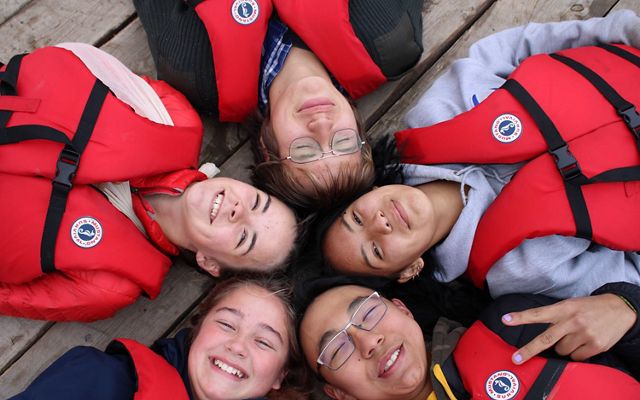
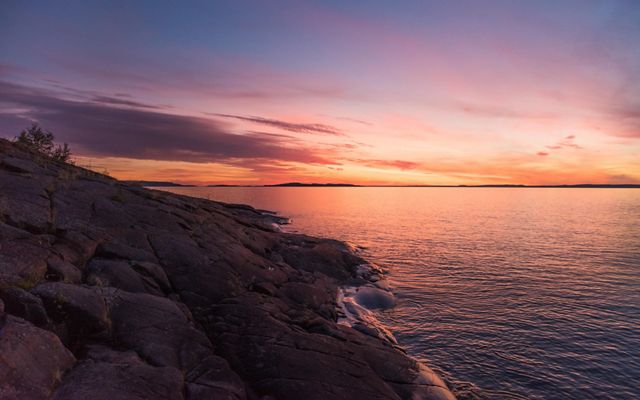
The Depths of Climate Change
Working alongside oceanographer Dr. Eddy Carmack, students surveyed the extreme depths of Great Slave Lake. Large, cold lakes are valuable to understanding climate change in the north. Scientists study how a lake turns over and mixes, monitor the cycles of ice freezing and thawing, and measure the presence of dissolved organic carbon to learn about changes happening between the land and the water.
But the student-teacher relationship is not one-sided. The youth shared stories and legends of the lake and their knowledge of its behavior and ecology with the team of researchers, technicians and the Captain. This exchange of local and traditional knowledge proved that there is more than one way of knowing and observing the world.
These experiences expose young people to stewardship jobs where on-the-land knowledge is critical; they become singular touchstones for the students to further their education in new and unforeseen ways that benefit themselves, their culture, and their communities. This is incredibly important in Łutsël K’é, where the First Nation is responsible for co-governance of Thaidene Nëné—a 6.5-million-acre protected area. The intergenerational transfer of knowledge that occurs through Emerging Leaders programs like this one ensures that Łutsël K’é Dene First Nation's rights and responsibilities in the management of Thaidene Nëné be recognized and exercised into the future. That is why Nature United will continue to support regional, community-led youth programs in the Northwest Territories and elsewhere.
Quote
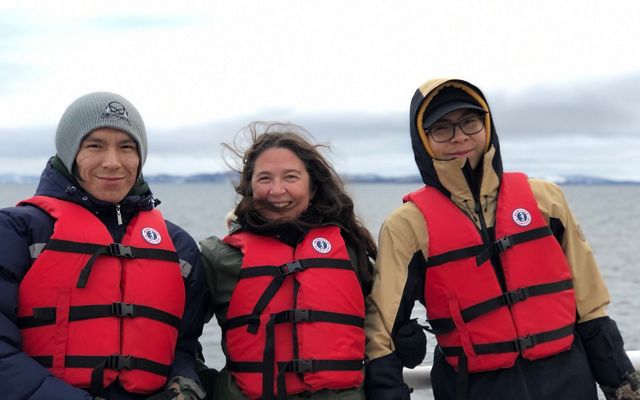
These experiences expose young people to stewardship jobs where on-the-land knowledge is critical; they become singular touchstones for the students to further their education in new and unforeseen ways.
Now, in light of the COVID-19 crisis, this community-led approach to support emerging youth leadership is more important than ever to ensure lasting success, with resilient adult leaders of the future. With a small population, and 33 remote communities, the Northwest Territories has taken bold steps to contain the virus. And small communities across the territory, like Łutsël K’é, continue to balance safety with ongoing priorities. Decisions about how and when programs like the one onboard the Nahidik move forward will be informed by the communities themselves.
The experience onboard the Nahidik is a deep dive on the importance of multiple ways of knowing and how that varying expertise, those different skills, can work together to run a research vessel—and perhaps someday something even larger.
